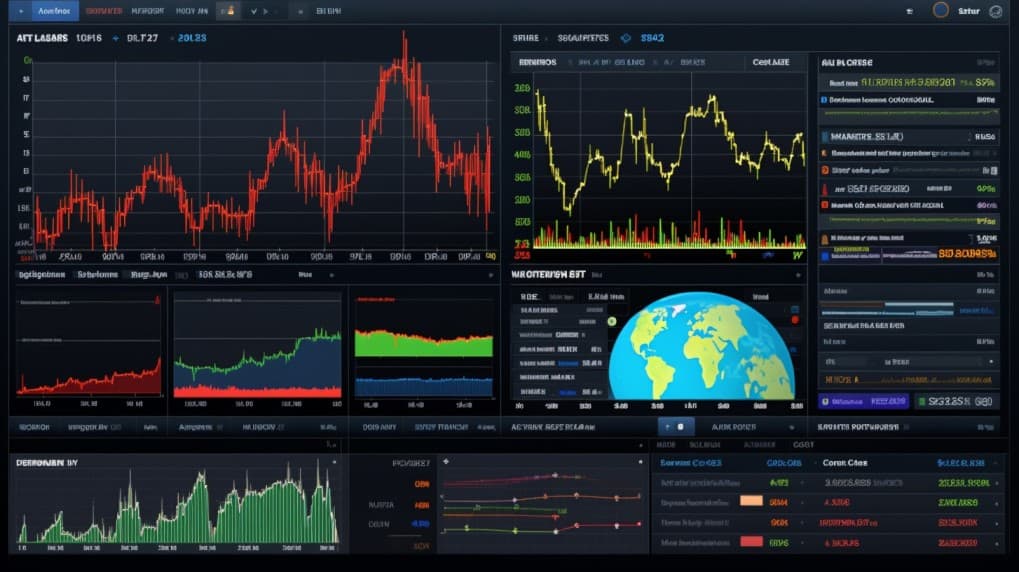
IHAK VS XLK
In the ever-evolving world of finance, ETFs (Exchange Traded Funds) have become a popular investment vehicle for many investors. Among the myriad of ETFs available in the market, two have caught the attention of many: IHAK and XLK. Both ETFs have their unique characteristics and cater to different investment strategies. In this article, we will delve deep into the comparison of IHAK VS XLK, shedding light on their sectors, top holdings, capitalization strategies, and tracking exposure.
IHAK VS XLK: Sectors and Top Holdings
IHAK and XLK, while both being ETFs, focus on different sectors of the market. IHAK, for instance, is more geared towards cybersecurity, encompassing companies that stand at the forefront of protecting digital information. Its top holdings include renowned cybersecurity firms that have proven their mettle in the industry.
On the other hand, XLK is a tech ETF, representing the technology sector of the S&P 500. It includes giants like Apple, Microsoft, and Google's parent company, Alphabet. These companies have been the driving force behind the tech revolution and have consistently delivered value to their shareholders.
 IHAK overlap IHAK VS XLK
IHAK overlap IHAK VS XLK
IHAK VS XLK: Capitalization Strategy
When it comes to capitalization strategy, IHAK and XLK differ significantly. IHAK tends to focus on a mix of both large-cap and mid-cap companies. This strategy allows it to capture the growth of emerging cybersecurity firms while still maintaining a stable foundation with established companies.
XLK, being representative of the S&P 500's tech sector, is heavily weighted towards large-cap companies. These companies have massive market capitalizations, often running into the trillions. Investing in such giants provides stability, but it also means that the potential for exponential growth might be limited compared to mid or small-cap stocks.
IHAK VS XLK: Tracking and Exposure
The essence of any ETF lies in its ability to track its underlying index efficiently. In the case of IHAK, it tracks the ISE Cyber Security Index. This index is a benchmark for the performance of companies in the cybersecurity sector. IHAK's exposure to this index means that investors can expect the ETF to mirror the performance of the cybersecurity industry closely.
XLK, as mentioned earlier, tracks the technology sector of the S&P 500. Its exposure is broad, encompassing various sub-sectors within technology, from software to hardware and services. This broad exposure means that investors in XLK are not just betting on one segment of the tech industry but the entire spectrum.
Conclusion
Choosing between IHAK and XLK boils down to an investor's preference and risk tolerance. If one is looking for exposure to the burgeoning cybersecurity industry with a mix of stability and growth, IHAK might be the way to go. However, for those who believe in the continued dominance of tech giants and want a piece of the entire tech industry, XLK offers a compelling proposition.
Both ETFs have their merits, and both have shown the potential to deliver returns to investors. As with any investment decision, it's crucial to do thorough research and perhaps consult with a financial advisor to determine which ETF aligns best with one's investment goals.
Sources:
- [Link to IHAK's official page or a reputable financial analysis site]
- [Link to XLK's official page or a reputable financial analysis site]
- [Link to a general ETF comparison tool or site]
IHAK ETF issuer
IHAK ETF official page
XLK quote and analysis
Discover the top holdings, correlations, and overlaps of ETFs using our visualization tool.
Our app allows you to build and track your portfolio.
To learn more about the XLK Technology Select Sector SPDR Fund, access our dedicated page now.